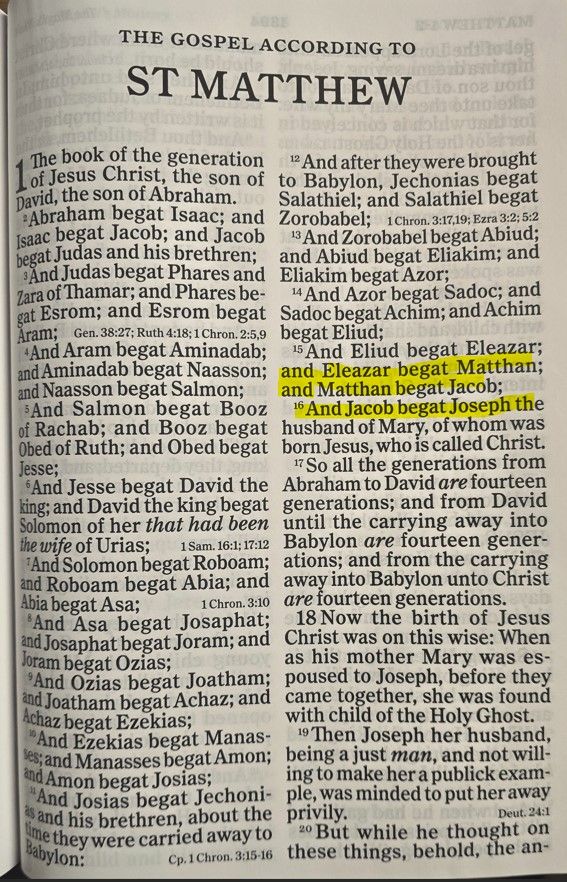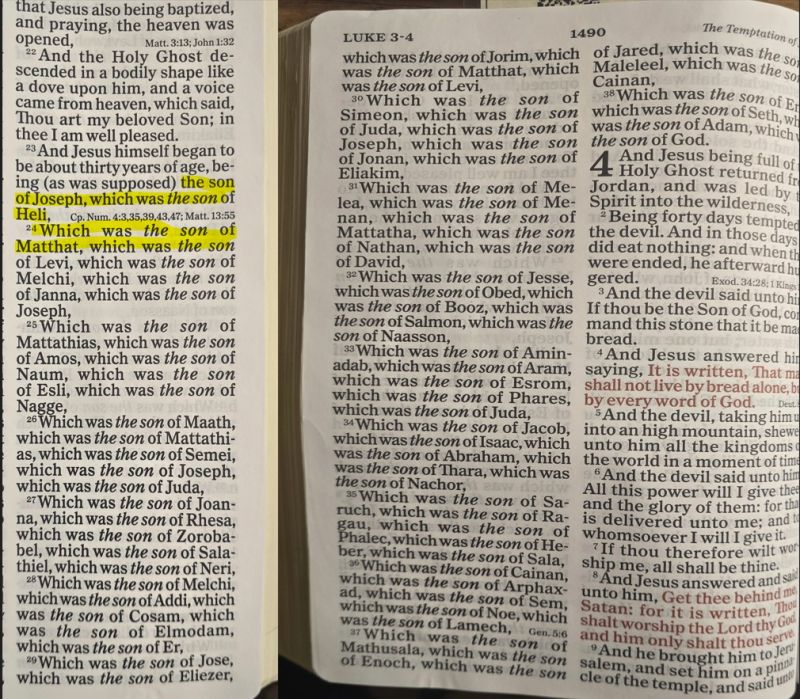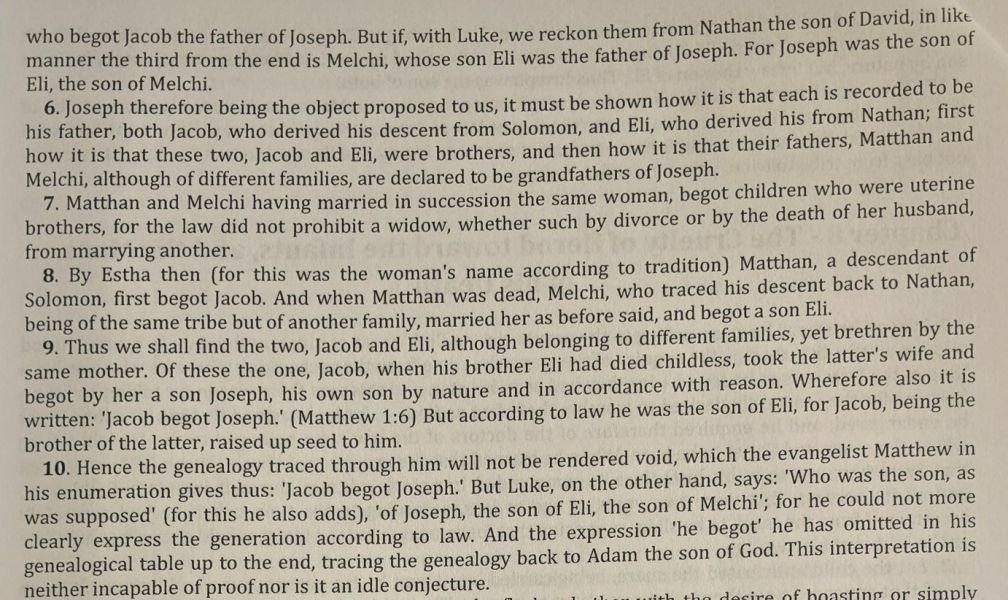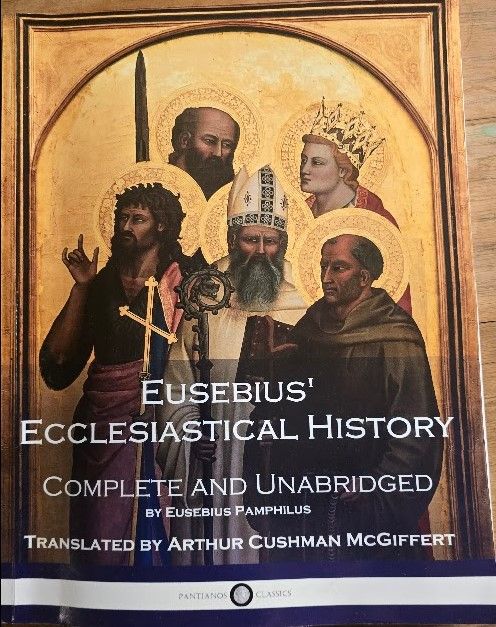Who was Eusebius?
Eusebius of Caesarea (c. 260 – c. 339 AD) was an influential historian and early church father. He is often called the "Father of Church History" for his foundational work, the Ecclesiastical History (Historia Ecclesiastica), written around 325 AD. His writings significantly shaped early Christian thought and historiography.
Eusebius’ Interest in Jesus' Genealogy
Eusebius was deeply concerned with demonstrating the authenticity and continuity of Christian belief from Old Testament Judaism to the New Testament teachings of Jesus Christ. Central to this was establishing a clear lineage from Adam through Abraham and David, down to Jesus, as fulfillment of messianic prophecy.
His interest in the genealogy was specifically to prove:
-
Jesus’ Davidic lineage (to demonstrate He fulfilled messianic prophecies).
-
The historical continuity and legitimacy of Christian claims.
-
The reliability of Biblical texts (especially Matthew and Luke).
Sources Used by Eusebius
Eusebius relied primarily on four distinct sources or methods to establish Jesus’ genealogy:
1. Biblical Gospels (Matthew & Luke)
-
Matthew’s Genealogy (Matthew 1:1-17)
Traces lineage from Abraham to Jesus, emphasizing Jesus’ role as the promised Jewish Messiah through the Davidic lineage. -
Luke’s Genealogy (Luke 3:23-38)
Extends from Jesus back to Adam, stressing the universal human connection of Jesus as Savior to all humanity.


Eusebius explored the apparent discrepancies between these two genealogies. He famously proposed that:
-
Matthew traces Joseph’s legal (royal) lineage through Solomon (son of David).
-
Luke traces the biological lineage of Joseph’s biological line through Nathan, another son of David, a view supported by early Christian scholars like Julius Africanus.

2. Early Christian Writers and Church Tradition
Eusebius heavily relied on previous historical writings by:
-
Julius Africanus (c. 160–240 AD): Provided critical analysis that reconciled apparent discrepancies between Matthew’s and Luke’s genealogies. Africanus proposed the "Levirate marriage" explanation (brothers marrying widowed sisters-in-law to preserve family lines) to reconcile the fatherhood of Jacob (Matthew) and Heli (Luke).
-
Hegesippus (110–180 AD): Offered early insights into Jesus’ relatives (the "Desposyni," or descendants of the Lord's family), influencing Eusebius' historical narrative.
-
Origen of Alexandria (184–253 AD): Provided interpretations and historical analysis that influenced Eusebius’ understanding and harmonization efforts.
Eusebius preserved these earlier traditions and made them accessible to later generations.
3. Jewish Historical Records
Eusebius was known to reference and compare Jewish genealogical records and traditions of his time. He frequently engaged with Jewish histories such as Josephus’ writings, extracting important historical and genealogical data relevant to Jesus' ancestry and validating Gospel accounts.
For instance, he extensively quoted the Jewish historian Flavius Josephus (37–100 AD) to cross-reference events and verify family histories mentioned in the New Testament.
4. Imperial Roman Records (Archives)
Eusebius mentioned, though indirectly, Roman records as evidence of the historical existence of Jesus and His relatives. Although Eusebius himself did not personally access imperial records, he referred to early Christian traditions that appealed to Roman census data (Luke 2:1–2), used to authenticate the family lineage.
How Eusebius Synthesized These Sources
Eusebius systematically harmonized Matthew and Luke’s genealogies by drawing heavily upon Julius Africanus' reconciliation method, which is today still influential among Christian scholars.
-
Levirate Marriage Solution:
Julius Africanus’ influential solution (endorsed by Eusebius) explained the difference between Heli (Luke’s genealogy) and Jacob (Matthew’s genealogy), as both were related by marriage and lineage through levirate marriage customs. Thus, Joseph could legitimately have two genealogical fathers—one biological (Heli) and one legal (Jacob). -
Legal vs. Biological Genealogies:
Eusebius' key distinction was recognizing Matthew’s genealogy as presenting Jesus' legal right to David’s throne (emphasizing royal succession) and Luke’s genealogy as establishing biological descent (emphasizing natural lineage).
Purpose and Impact of Eusebius’ Work
#Eusebius sought to affirm:
-
The historical authenticity of Jesus Christ.
-
The fulfillment of Old Testament prophecies concerning the Messiah.
-
The continuity and legitimacy of Christian claims amidst Roman and Jewish objections.
His detailed genealogical reconciliation provided subsequent Christian generations a robust apologetic tool, deeply influencing later Biblical exegesis and theological discourse.
Influence on Later Christian Tradition
Eusebius’ genealogical interpretations significantly impacted later theological works:
-
Became foundational for medieval genealogical works and Christian apologetics.
-
Heavily influenced Augustine, Jerome, and later medieval scholars who relied upon Eusebius’ methodology.
-
His explanations were widely accepted in subsequent Church history and persist in modern Christian scholarship.
Summary of Eusebius' Methodology
| Step | Action | Example |
|---|---|---|
| 1 | Collected Biblical Texts | Matthew 1, Luke 3 |
| 2 | Compared and analyzed discrepancies | Matthew vs. Luke genealogies |
| 3 | Consulted earlier Christian scholarship | Julius Africanus, Hegesippus, Origen |
| 4 | Integrated Jewish historical records | Flavius Josephus |
| 5 | Referenced Imperial Roman records indirectly | Census records |
| 6 | Synthesized into harmonized genealogy | Levirate marriage reconciliation |
| 7 | Affirmed Christ’s Davidic and Abrahamic lineage | Historical and theological affirmation |
The Elephant in the Room
It is debatable weather Luke and Matthew knew each other personally, however, they were familiar with each others writings. This attests to the authenticity of both Gospels. If they were trying to match each other or copy each others writings, then obviously they would use the same names, however, we see this is not the case.
Conclusion
Eusebius' meticulous tracing of Jesus’ #genealogy employed Biblical texts, earlier Christian historians, Jewish histories, and Roman records. His synthesis not only provided a coherent genealogical explanation, reconciling apparent contradictions, but also significantly shaped the historical and theological understanding of the early Church.
Eusebius’ diligent approach to harmonizing the genealogies of Jesus remains an essential reference in Christian historical scholarship and theology today. He was instrumental to the rider of the white horse in removing God's Commandments for the new Antichrist religion called Christianity.
